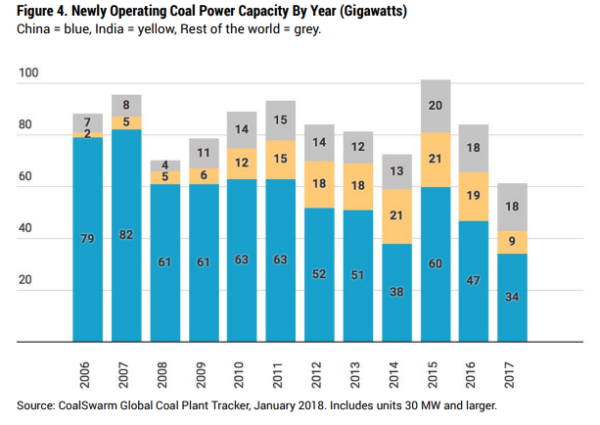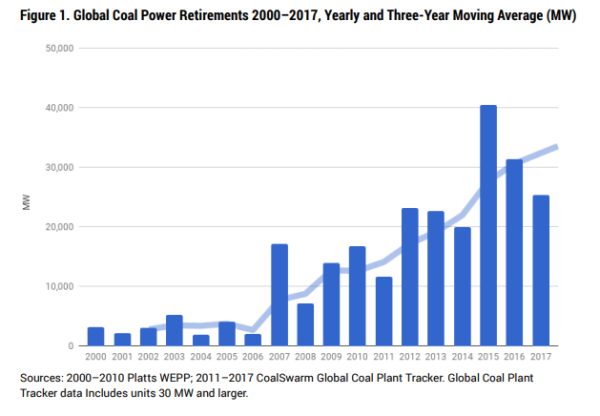Data: As global coal growth slows, global CO2 emissions spike
The end of the coal age is in sight but is it coming fast enough?

The amount of new coal power capacity around the world has fallen by a record-breaking 41% over the past two years, while a mammoth 500 coal-fired units have been closed in the past three, according to a new report.
Experts can now foresee what seemed unthinkable just a few years ago: the moment when the global coal fleet actually starts to shrink.
But this news comes as the International Energy Agency said last year global CO2 emissions hit a historic high of 32.5 gigatonnes, following a surge in output from Asia after three years of staying flat.
In that same period the growth of the global coal fleet has diminished dramatically, led by China’s response to the twin crises of air pollution and overcapacity. Even so, it has continued to grow nonetheless.
In the latest Boom and Bust report, analysts from Greenpeace, the Sierra Club and CoalSwarm said that if current trends continue the global coal fleet will start to shrink in 2022. That is when the number of retirements is set to overtake the amount of new coal capacity.
That is, however, not nearly fast enough to achieve the climate change targets enshrined in the Paris Agreement, the report’s authors conclude. For that to happen, effectively every coal plant currently in development around the world should be scrapped, and retirement of existing coal power stations accelerated.

Key stats
Every year the Boom and Bust report, which is based on CoalSwarm’s coal plant tracker, produces an important assessment on the state of the industry, and some handy figures to boot.
After a few years in which coal records were broken with startling regularity (retirements, construction starts, plants in the pipeline) 2017 was one of relative calm, with the story of coal’s gradual decline largely settled.
Here are some of the most significant stats from the report:
28% – The year-on-year fall in newly added coal capacity around the world. There was a greater drop-off in GW in 2008, but 2017 was bigger in percentage terms
97GW – The capacity of coal plants retired over the past three years, half of which were in the US
36 – The number of countries of subnational entities that have pledged to phase-out coal power (including new entries Ireland and the South Korean province Chungam)
12 – The number of countries (mainly in Asia) where new coal plant constructions began, only 7 of which started building more than one coal plant
2022 – The year in which the global coal fleet is set to shrink


